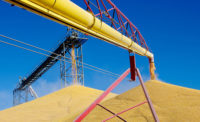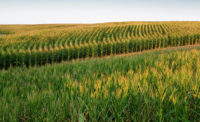Meaningful Solutions
Last year saw an almost-record crop and 2014 is on schedule to be even better. U.S. farmers become more efficient every year at increasing yield per acre. Improved hybrids, GPS technology, better chemicals and superior equipment make our farmers extremely competitive with other farmers in the world. But even with a great crop, one hiccup in other growing areas in the world could result in a market correction.
Every year farmers in the United States lose market shares of corn and soybean crops in the world as farming becomes stronger and more advanced in other nations such as China, Brazil, Australia and Russia. This creates more volatility in the global price based on events that can occur in other parts of the world. In addition, domestic changes can push our farmers’ break-even points higher and higher, i.e. escalations in land prices per acre, fertilizer and other increased costs.
Every year is unique with U.S. row crops and 2014 will be no exception. First, we had a record cold and snowy winter that provided a great deal of moisture throughout much of the Corn Belt. Because of the late winter, crops were planted four to six weeks late in many areas. With all the moisture we experienced throughout the spring and early summer in the corn and soybean region of the U.S., we are off to a great start. While it’s always difficult to predict in July what will happen in August, if these conditions continue, we may have a record crop of corn despite reduced acreage; however, since the crop was planted late there is a higher risk moisture will not be available late in the growing season, which could somewhat moderate our yield.
Released June 30, 2014, National Agricultural Statistics Service (NASS), Agricultural Statistics Board, United States Department of Agriculture (USDA).
- Corn Planted Acreage Down 4% from 2013
- Soybean Acreage Up 11%
- All Wheat Acreage Up Less Than 1%
- All Cotton Acreage Up 9%
The USDA estimates 91.6 million acres of corn were planted, making this the fifth-largest acreage of corn planted since 1944. Additionally, many acres that were planted with corn last year needed to be shifted to soybeans, causing an estimated 84.8 million acres planted this year. Seasoned farmers know that every year you plant corn back-to-back the yield declines, making it necessary to switch to soybeans even though corn has been more profitable in recent years. This dynamic accounts for the increase in soybeans that we are seeing this year. It should be noted that even the states thought to have been hit hard by recent rains are still doing well as it relates to their corn crops.
Today’s protein producers have increasing options throughout the season to source materials from other countries. During the drought of 2012, many U.S. protein producers were fortunate to be able to import crops they would have sourced domestically to make up for the national shortfall. Currently, all protein areas are struggling to meet demand. Poultry producers are earning record profits but production is down as a result of the drought of 2012, and pork continues to struggle as a result of PEDV. If Mother Nature continues to cooperate and we do get lower-cost feed ingredients, things will surely change for all.
We are being tasked with the ability to supply food for a growing middle class and a growing world population. By 2050, sources indicate worldwide demand for protein will increase by 60 percent. This will have to be produced from fewer acres in the U.S. and Europe as well. This feat will be accomplished in part by improved efficiencies in yield-per-acre. Unfortunately, the U.S. will continue to lose market shares to other producers in the world because of new regulations proposed by the EPA and the FDA. Our own government is restricting our ability to meet this demand. However, I believe the providence and resourcefulness of the people in agriculture will overcome our own government’s attempts to save us from ourselves.
The responsibility we have as key contributors in the business of agriculture is to continue to find more effective ways of improving our efficiencies. We need to continue to show discipline and maintain the balance between supply and demand so our industry remains profitable.
Sources:
http://www.usda.gov/nass/PUBS/TODAYRPT/acrg0614.txt
http://www.usda.gov/nass/PUBS/TODAYRPT/prog2714.pdf









